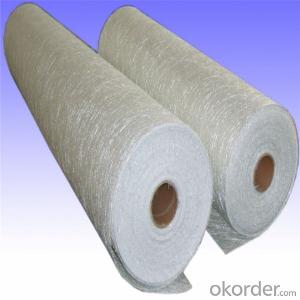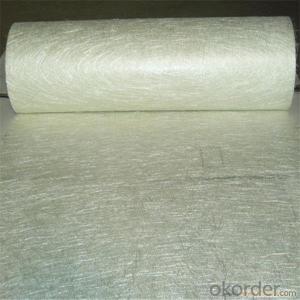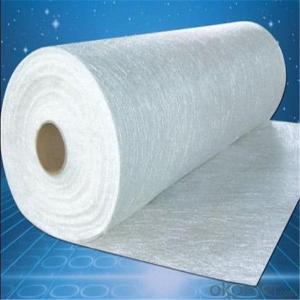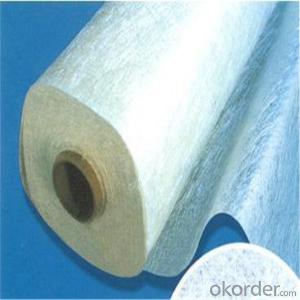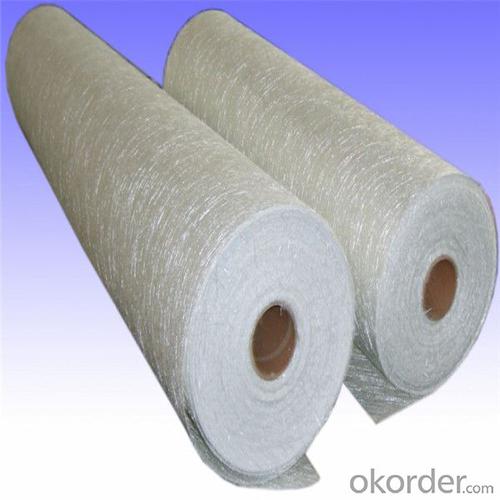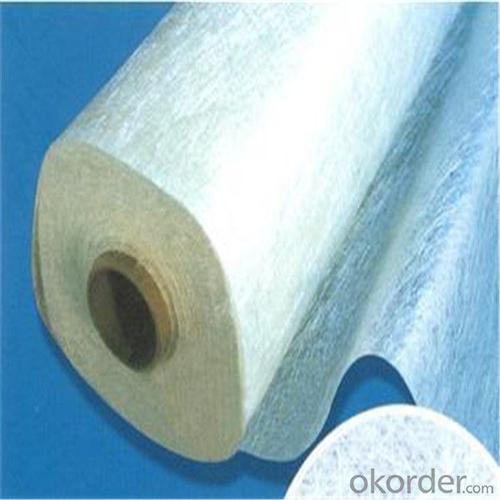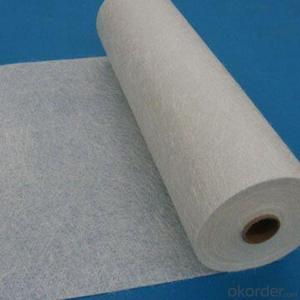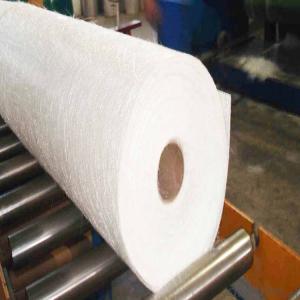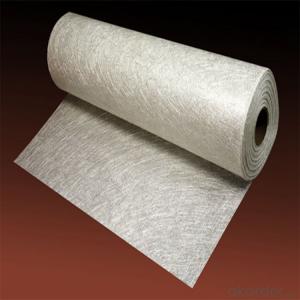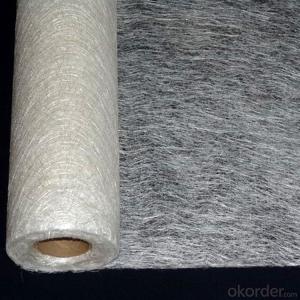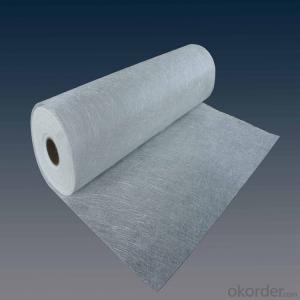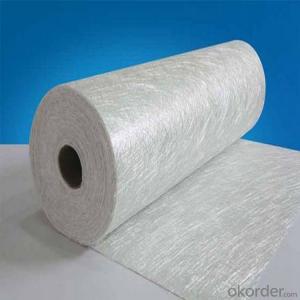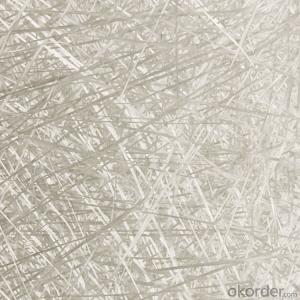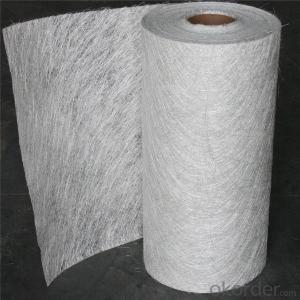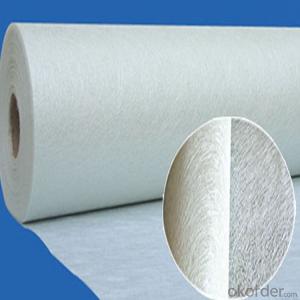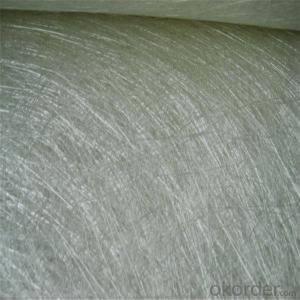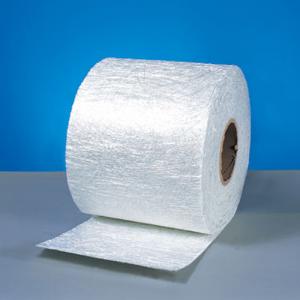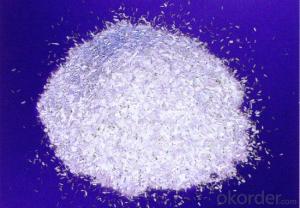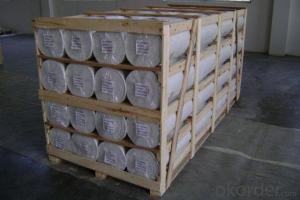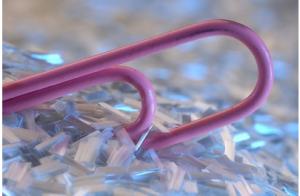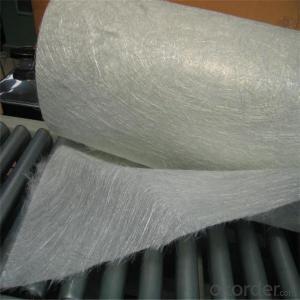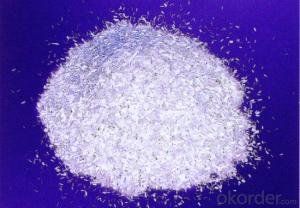Fiberglass Chopped Strand Mat Cloth E-Glass Fiberglass Chopped Strand Mat for Ceiling
- Loading Port:
- Tianjin
- Payment Terms:
- TT OR LC
- Min Order Qty:
- 100 m.t.
- Supply Capability:
- 20000 m.t./month
OKorder Service Pledge
Quality Product, Order Online Tracking, Timely Delivery
OKorder Financial Service
Credit Rating, Credit Services, Credit Purchasing
You Might Also Like
Quick Details
| Technique: | Chopped Strand Fiberglass Mat (CSM) | Dimensions: | 450gsm | Mat Type: | Continuous Filament Mat |
| Fiberglass Type: | E-Glass | Softness: | softness | Place of Origin: | Jiangxi, China (Mainland) |
| Brand Name: | cnbm | Model Number: | 450gsm | color: | white |
| fiberglass type: | E glass | product: | e-glass powder chopped stand mats | binder: | powder or emulsion |
| width: | 1040 or 1270mm, as your requirement | weight: | 30 or 45kg/roll | paper tube diameter: | 90mm |
| outer diameter of roll: | 256mm | packing: | plastic film+carton box + pallet |
Packaging & Delivery
| Packaging Details: | plastic film+carton box + pallet |
| Delivery Detail: | 15-20days |
Specifications
1.e-glass powder chopped stand mats
2.binder:power or emulsion
3.width:1040mm or 1270mm
4.weight:450gsm
Picture

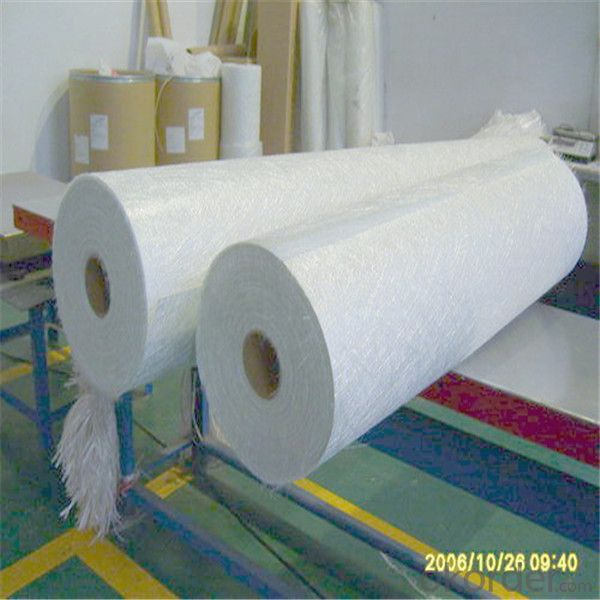

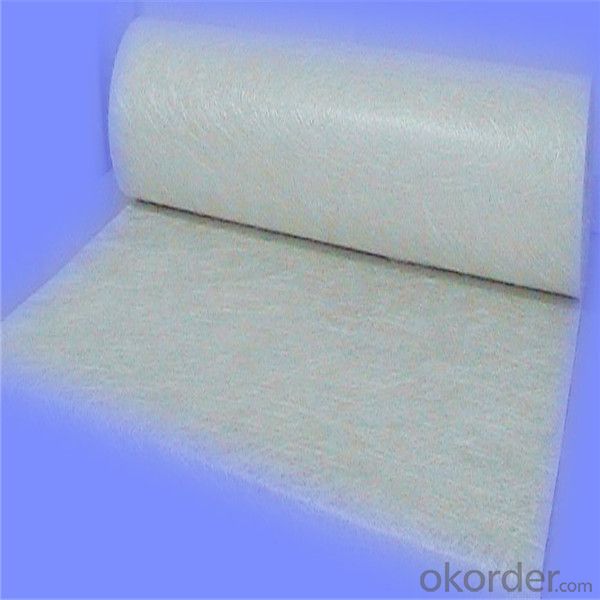

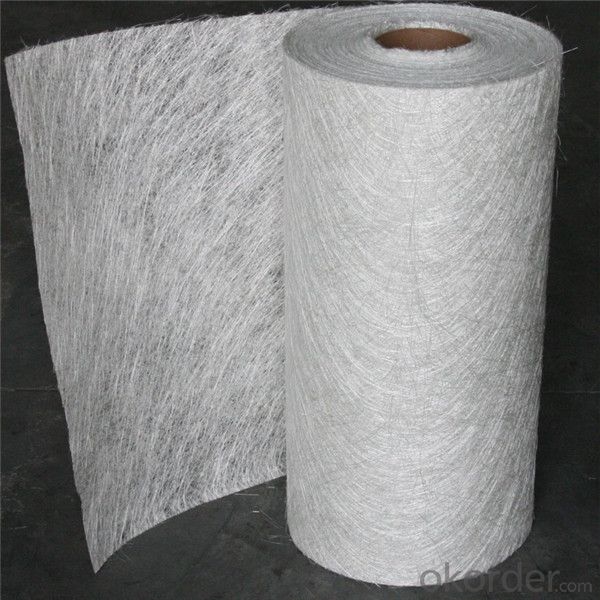
- Q: What are the different types of glass fibers used in chopped strand?
- There are several different types of glass fibers that are commonly used in chopped strand. These include E-glass fibers, S-glass fibers, C-glass fibers, and AR-glass fibers. E-glass fibers are the most commonly used type of glass fiber in chopped strand. They are made from a type of glass called "E-glass," which is known for its high strength and good electrical insulation properties. E-glass fibers are used in a wide range of applications, including automotive parts, construction materials, and electrical insulation. S-glass fibers are another type of glass fiber that is used in chopped strand. S-glass is a type of glass that is known for its high strength and modulus. It is often used in applications that require exceptional mechanical properties, such as aerospace components and military vehicles. C-glass fibers are a type of glass fiber that is made from a type of glass called "C-glass." C-glass is known for its resistance to chemical corrosion, making C-glass fibers suitable for use in applications that involve exposure to harsh chemicals, such as chemical storage tanks and pipes. AR-glass fibers, also known as alkali-resistant glass fibers, are specially designed to resist the alkaline environment that is present in some applications, such as concrete reinforcement. These fibers have a special surface treatment that protects them from degradation when exposed to alkaline substances, making them ideal for use in construction materials. Overall, the different types of glass fibers used in chopped strand offer a range of properties and characteristics that make them suitable for various applications. By choosing the appropriate type of glass fiber, manufacturers can create chopped strand products that meet the specific requirements of their intended use.
- Q: Characteristics of GRC European lines
- Easy moulding, light weight, high strength. But more than 90% of the GRC line are not light and strength enough. It is only made by mortaring 1--2 grid reinforced mortar with rebar. Actually it is mortar. It is easily broken.Only a few years later, it will be broken, especially the steel in side will rust away to destroy the mortar.if installed in the air, it is more dangerous, just like installing a time bomb. The real GRC should be the precursor of alkali resistant fiber chopped with mortar and additives together and injecte into the mold by the injection equipment , then rolling layer by layer. The GRC main indicators are fiber contents are more than 5%, the fiber amount of GRC in fiber mesh cloth usually are less than 1%. In fact, the full name of GRC is glass fiber reinforced cement, the reinforcement materials of glass fiber just like the rebar of the reinforced concrete. What will happen if there are no rebar in the armoured concrete(it will be terrible).
- Q: Is fiberglass chopped strand suitable for thermal insulation?
- Indeed, fiberglass chopped strand proves to be an ideal option for thermal insulation purposes. Renowned and extensively utilized, fiberglass stands out due to its exceptional thermal qualities. Its low thermal conductivity allows for efficient heat transfer prevention, ensuring the maintenance of desired temperatures within confined areas. Employing fiberglass in its chopped strand configuration further enhances its insulation capabilities, as it can be effortlessly packed or blown into cavities, forming a seamless and efficient barrier. Moreover, fiberglass chopped strand insulation guarantees safety, as it is non-combustible, rendering it a secure choice for thermal insulation across diverse industries and applications.
- Q: Can fiberglass chopped strand be used in electrical conductive applications?
- Fiberglass chopped strand is not suitable for electrical conductive applications due to its insulating nature. This material does not possess the ability to conduct electricity. It finds its frequent use in applications that demand electrical insulation, such as circuit boards, electrical cables, and insulation barriers. However, if electrical conductivity is desired, it is advisable to opt for materials like copper, aluminum, or other conductive metals.
- Q: What material is made of glass fiber pipe?
- Glass fiber cloth and resin
- Q: How does the fiber diameter affect the performance of chopped strand composites?
- The fiber diameter of chopped strand composites affects their performance in several ways. Firstly, a smaller fiber diameter allows for better dispersion within the matrix, leading to improved mechanical properties such as tensile strength and stiffness. Smaller diameter fibers also have a larger surface area, enhancing the interfacial bonding between the fibers and the matrix, resulting in increased strength and durability. Furthermore, smaller diameter fibers can be packed more densely, leading to a higher fiber volume fraction and improved load-bearing capacity. However, excessively small fiber diameters can also lead to increased processing difficulties and decreased impact resistance. Therefore, finding an optimal fiber diameter is crucial for achieving the desired performance in chopped strand composites.
- Q: How is fiberglass chopped strand used in the wind energy sector?
- Fiberglass chopped strand is extensively used in the wind energy sector for various applications. One primary use of fiberglass chopped strand in this industry is for reinforcing the composite materials used in wind turbine blades. Fiberglass chopped strand is mixed with a resin matrix, such as epoxy or polyester, to create a composite material that offers excellent strength, durability, and lightweight properties. These composites are then used to manufacture wind turbine blades, which need to withstand extreme environmental conditions while maintaining optimal performance. The chopped strands of fiberglass provide reinforcement to the composite material, improving its mechanical properties such as tensile strength, stiffness, and impact resistance. This reinforcement ensures that wind turbine blades can handle the high loads and stresses imposed on them during operation. Additionally, fiberglass chopped strand helps to increase the fatigue resistance of the composite material. Wind turbine blades are subjected to constant cyclic loading due to wind forces, and the use of chopped strand fiberglass helps to enhance the blade's ability to withstand these repeated loads without experiencing fatigue failure. Furthermore, fiberglass chopped strand is also used in the manufacturing of other wind energy components, such as nacelles, hub covers, and various structural parts. These components require high strength and rigidity, and the incorporation of chopped strand fiberglass helps to meet these requirements. Overall, fiberglass chopped strand plays a crucial role in the wind energy sector by enabling the production of lightweight and durable composite materials used in wind turbine blades and other components. Its use enhances the performance and reliability of wind turbines, contributing to the growth and sustainability of the renewable energy industry.
- Q: What is the diameter of fiberglass chopped strand?
- The diameter of fiberglass chopped strand can vary depending on the specific product and manufacturing process. However, on average, the diameter of fiberglass chopped strand ranges between 10 to 25 micrometers.
- Q: How does fiberglass chopped strand affect the weight of products?
- The weight of products can be significantly affected by fiberglass chopped strand. Chopped strand, which consists of small, cut fibers of fiberglass material, increases the overall weight when introduced into a product or material. This occurs because fiberglass itself is relatively lightweight, but when incorporated as chopped strands, it enhances the density and weight of the end product. The desired weight and strength requirements can be achieved by adjusting the amount of chopped strand added. Furthermore, the weight of the product can also be influenced by the length and thickness of the strands. Longer and thicker strands contribute more weight compared to shorter and thinner ones. Ultimately, the inclusion of fiberglass chopped strand effectively elevates the weight and structural integrity of products.
- Q: Can fiberglass chopped strand be used in aerospace structural components?
- Yes, fiberglass chopped strand can be used in aerospace structural components. It is a commonly used material for various aerospace applications due to its lightweight, high strength-to-weight ratio, and excellent corrosion resistance properties. Additionally, it can be easily molded into complex shapes, making it suitable for aerospace structural components that require intricate designs.
Send your message to us
Fiberglass Chopped Strand Mat Cloth E-Glass Fiberglass Chopped Strand Mat for Ceiling
- Loading Port:
- Tianjin
- Payment Terms:
- TT OR LC
- Min Order Qty:
- 100 m.t.
- Supply Capability:
- 20000 m.t./month
OKorder Service Pledge
Quality Product, Order Online Tracking, Timely Delivery
OKorder Financial Service
Credit Rating, Credit Services, Credit Purchasing
Similar products
Hot products
Hot Searches
Related keywords
